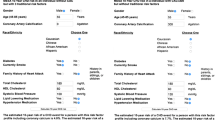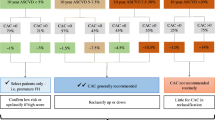Background:
The continuing epidemic of cardiovascular disease underscores the need for more effective atherosclerosis detection and prevention. In fact, though the mortality rate decreased during the past decades, the morbidity rate continued to climb. The use of conventional risk factors is helpful to assess the median risk of a population, but it is unsatisfactory to estimate the actual risk of an individual patient.
Modern Imaging Technologies: As a consequence, modern imaging technologies able to detect silent atherosclerotic disease have elicited a strong interest in the medical community with the hope that they may render risk stratification more accurate. Technologies such as electron beam tomography (EBT) are expected to bridge the gap between the mere presence of risk factors for disease development and assessment of the actual individual risk of events based on the visualization and quantification of silent disease.
Conclusion: The medical literature is currently pervaded by a vivacious debate regarding the ability of EBT to provide such information as some investigators still hold concerns about the cost and effectiveness of a preventive approach driven by technology.
Hintergrund:
Angesichts der anhaltenden “Epidemie2 von kardiovaskulären Erkrankungen ist eine wirkungsvollere Früherkennung und Prävention der Atherosklerose von großer Wichtigkeit. Tatsächlich hat die Krankheitsprävalenz weiter zugenommen, obwohl die Sterblichkeit durch Erfolge in der Therapie symptomatischer Patienten zurückgegangen ist. Die konventionelle Risikofaktorbestimmung erlaubt eine gute statistische Abschätzung der kardiovaskulären Ereignisrate, aber die Ergebnisse für den individuellen Patienten bleiben unbefriedigend.
Moderne bildgebende Verfahren, die eine Visualisierung der klinisch inapparenten atherosklerotischen Erkrankung erlauben, erfahren deshalb zurzeit unter der Vorstellung großes Interesse, dass sie eine genauere Risikoprädiktion ermöglichen. Es wird erwartet, dass diese Verfahren, so auch die Elektronenstrahltomographie (EBT), die diagnostische Lücke schließen können, die bei der alleinigen Risikofaktoranalyse entsteht. Durch die Visualisierung und Quantifizierung der atherosklerotischen Plaquebildung kann untersucht werden, ob die individuelle Risikoexposition tatsächlich auch zur Erkrankung mit entsprechend erhöhtem Risiko geführt hat.
Schlussfolgerung: In der medizinischen Literatur wird die Fähigkeit der EBT heftig diskutiert, eine in einigen Berichten vorgestellte, gegenüber den konventionellen Risikofaktoren weit überlegene Risikoprädiktion liefern zu können. Viele Autoren sehen immer noch Probleme der neuen Technologie hinsichtlich Kosten und Effektivität.
Similar content being viewed by others
Author information
Authors and Affiliations
Additional information
Rights and permissions
About this article
Cite this article
Raggi, P. Prognostic Implications of Absolute and Relative Calcium Scores. Herz 26, 252–259 (2001). https://doi.org/10.1007/PL00002028
Issue Date:
DOI: https://doi.org/10.1007/PL00002028




